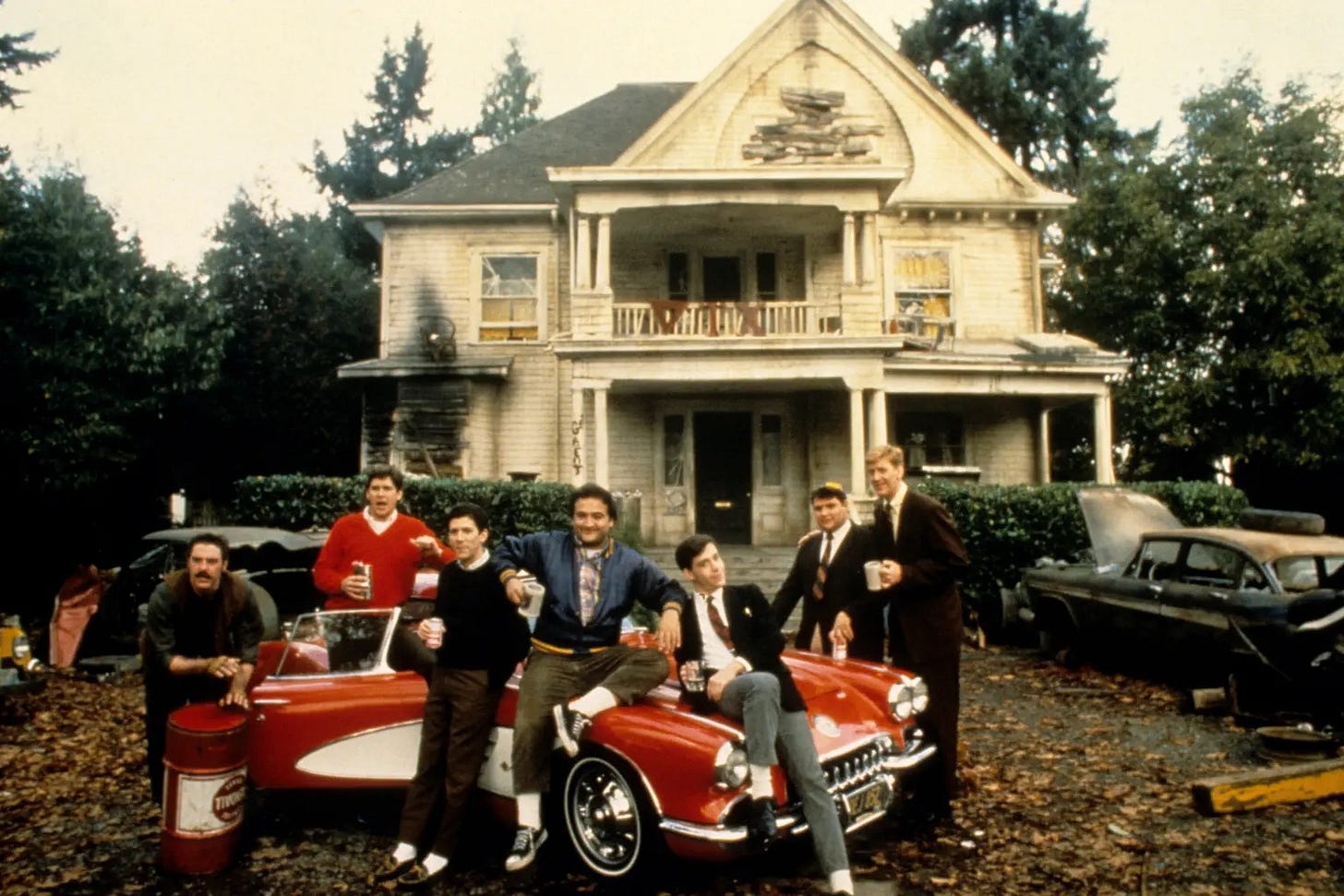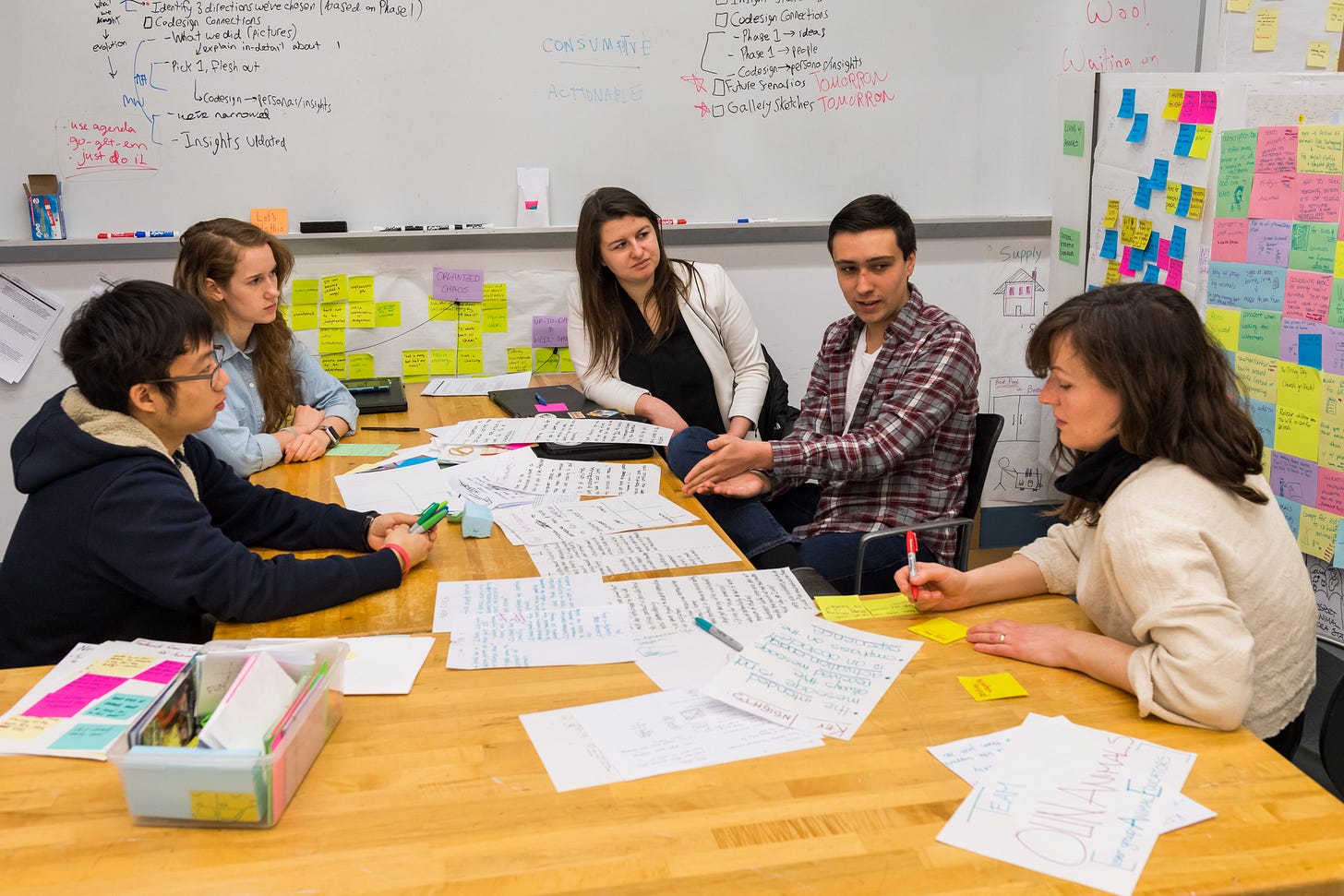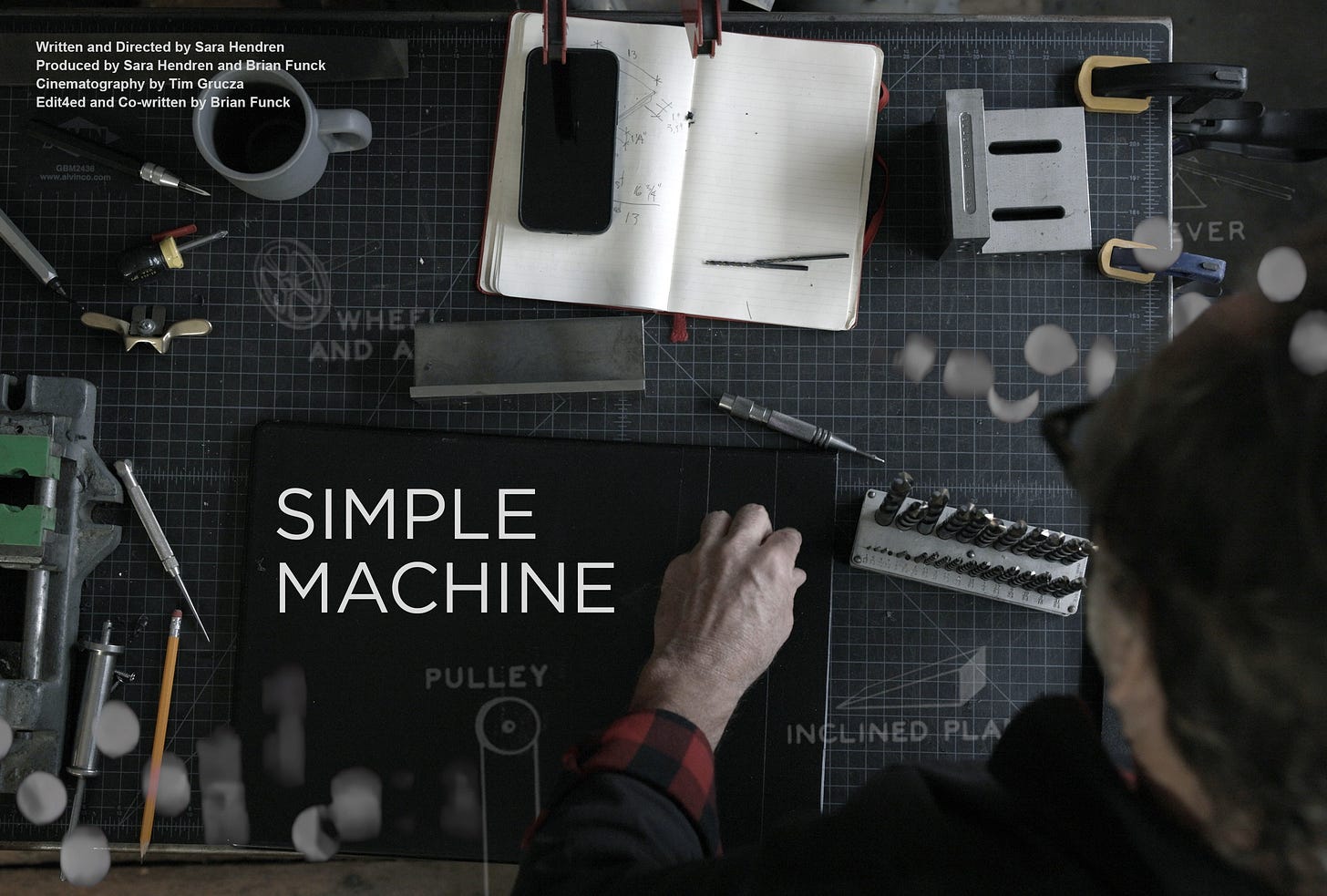This is undefended / undefeated, Sara Hendren’s newsletter that you signed up for at some point. Sometimes I write about design and disability (like here and here), sometimes about architecture and philosophy, and sometimes about education, as you’ll read below. I’m still proud of this piece I wrote on the 20th anniversary of 9/11 about my husband’s long friendship with Todd Beamer, the “let’s roll” guy who gave up his life to help bring down Flight 93. Maybe next year I’ll do an extended series of some kind? I have some ideas. But until then, thanks for reading.

It’s the start of the new year, and I should probably be over on Canvas refining my course sites. I can’t wait to meet my new students! But the American higher ed scene remains pretty fraught, and I’ve been thinking about the big picture this summer. Two of my three children are getting nearer to college, so the questions loom large for me professionally and personally. Maybe for you too? In a series of blog posts on my web site, I’ve tried to think through what feels most important in the decision matrix at our house, and I offer these ideas to others here, in hopes they might be clarifying. Below I’ve excerpted passages from each one, with links throughout.
Part 1 is about how young people need formation. You probably disagree with me on this! Most parents I know are taking their cues from their children’s stated desires, plus their family budget, and going from there. I get it. I really do. But years of teaching have taught me to think again:
Any time I express consternation about [how to choose a university], most people will jump to remind me, with a smug little side-hug, that it’s not me going to college. And what they mean is: as a parent, my job is to array the affordable choices for my children to see clearly, and then to step out of the way while my children choose. Whatever they’re into, I’m meant to support it. That’s the mature psychological way to do this, the thinking goes. Don’t make it about you, they say, knowingly. You’d be micro-managing.
But this is the first of many parenting presuppositions that make up the cultural water we’re swimming in and therefore can’t see. We imagine our children as maybe-slightly-immature but essentially fully-formed selves. Our job is framed as clearing the obstacles only; we’re tasked with whatever passive supports will help our children optimize themselves on their own terms. Whatever the good life is will be self-defined by our kids; who are we, as their parents, to say?
Part 2 is about philosopher Danielle Allen’s “readiness” framing for education: professional readiness, which is important and self-evident, versus participatory readiness, which is a set of civic literacies and practices for democracy. I think Allen’s terms are more specific and useful than the old “skills” vs “how to think” debate in liberal arts education. I’ve written about this here before, and I’ve been teaching this framing to students explicitly for a couple years now. It doesn’t always land easily:
Usually one of [my students] will say politely: Well, this participatory readiness sounds great, but given how much college costs, shouldn’t we be focused on the skills we need for jobs? We gotta pay bills. I see why this is their first-instinct response. But I say to them in return: Given how much it costs, shouldn’t you ask for that four years to give you something in addition to job skills? Some equipment for life ten, twenty years from now?
Even if you reject the idea of formation and think of college choice as a professional readiness proposition, I’d still argue that participatory readiness will make your kid more AI-proof than a narrowly scripted, industry-responsive, skills-led curriculum. It’s a tortoise-and-hare thing: They may learn the software to get them through the next five years, but what about after that? What ambitious projects might draw them, and what resources would they marshal to be ready?
In Part 3, I wrestle with the standard claim that the contemporary humanities contain all the readiness equipment that young people need to deliberate in a democracy. That’s Allen’s ideal — the classroom as civic rehearsal space — but I’ve come to think that buffet-style liberal arts proceduralism isn’t really sufficient for the biggest questions young people need to encounter. At some point they need the “prescriptive” domains of philosophy and theology. They need some truth claims that posit contested visions of the good life, and they need to grapple with them in good company:
My friend Sandra and I took a long road trip last summer, and she told me a story I’d never heard before. We were at Wheaton together, and she was one of the people whose faith, having been shepherded for her in k-12 Christian schools all the way through Wheaton, added up to far more questions than answers. This was troubling to her, finishing on such wobbly ground. Friends encouraged her to write to a much-loved theology professor and ask for advice. She had never taken his classes, but she did so in confidence. In a letter, by mail. You don’t know me, but I’m in trouble. Can you help?
And in Part 4, I write about the perils of seeing a university campus as one space, rather than as a series of specialized spaces for specialized purposes:
In architecture, we call the aerial view of a blueprint drawing the plan view: seeing the entirety of a structure from above, with a 2D simulacrum of completion, simplified, each container dedicated for its distinct purposes and labeled as such. I think [Wendy] Brown is right that when many of us invoke the word “campus,” a plan view in the mind’s eye does not distinguish at all. Rather, “campus” registers as one big mass of squares and rectangles and rotundas, all equally devoted to the well-intended mixture of belonging and safety and professional preparation and the life of the mind and recreation — and somehow all adding up to “home away from home” — as one lumped-together design and one united effort.
Campuses should take a closer look at their spaces and sharpen the distinctions of those spaces, even literally in the first-year arrival campus tours. As in: “Here is the dorm, where you share life with others and build friendships based on late-night advice, on open-ended loyalty and support in heart-to-hearts.” And “Here is your classroom, which is an arena for ideas scrupulously examined right down to the foundations, where you are invited to change your mind — or just try on changing your mind, provisionally — between the opening and closing of the semester.”

Finally, in part 5, I list some institutions, programs, classes, and study centers that together might exemplify what I’m looking for: a recovered and renewed liberal arts ideal, yes. Four years at a university is one way (not the only way) to accompany young people in seeing their lives with a gift disposition. As I write in that post:
Buried in a footnote in Lewis Hyde’s classic study on gift economies is a stirring question that sums up the adventure I hope holds my two college-bound children — at least some of the time — in their years at university. Earlier in the book, Hyde names the gift economy as operating on eros in its classical sense, a form of unfettered attachment, a “shaping into one”:
In the modern world the rights that adults have in their children…normally pass slowly from parent to child during adolescence and become fully vested in the child when he or she is ready to leave home.
If our lives are gifts to begin with, however, in some sense they are not “ours” even when we become adults. Or perhaps they are, but only until such time as we find a way to bestow them. The belief that life is a gift carries with it the corollary feeling that the gift should not be hoarded. As we mature, and particularly as we come into the isolation of being “on our own,” we begin to feel the desire to give ourselves away — in love, in marriage, to our work, to the gods, to politics, to our children. And adolescence is marked by that restless, erotic, disturbing inquisition: Is this person, this nation, this work, worthy of the life I have to give?
This isn’t that famous Mary Oliver formulation that starts with the autonomous and authoritative self — what will you do with your wild and precious life? In a gift economy, the self is first on the receiving end of abundance — gifts hidden, apparent, emerging, hard-sought. It takes practice and imagination and breaking bread with the dead to help young people see life as a gift. And then it takes more of the same, and more besides, to help them ask with that same spirit of abundance: How can I give my life away?
Thanks for reading. My short documentary Simple Machine is finished and going into festival submissions. Let me know if you’d like a screener link! And more project news to come. Big year ahead. All the best.





Issues I left unaddressed in the series: how the lab-studio-makerspace can be sites of formation and readiness; the role of service learning in the same; what having a child with intellectual disabilities has taught me about readiness. And more, I'm sure! Let me know if you'd like more on these topics.
Dear Sara, As always, your essays fill my imagination with possibilities. I'm retired but that hasn't stopped me from being a teacher, it's just taken my classroom to the rest of the world, starting with my street, my community, the politicians who I'm sure don't appreciate my emails and phone calls, and as many others as I can reach. Thank you for your inspirations and for helping me extend my reach!!! My best, Randy Cornelius